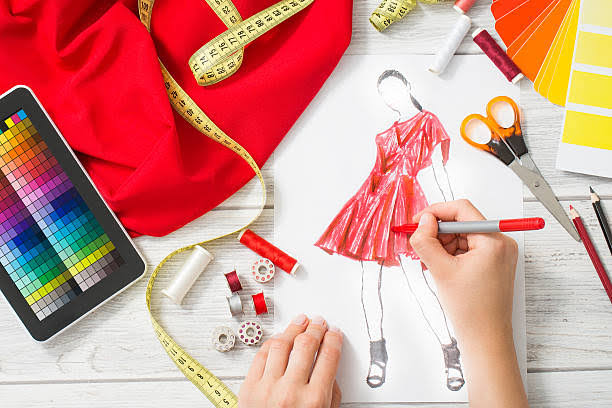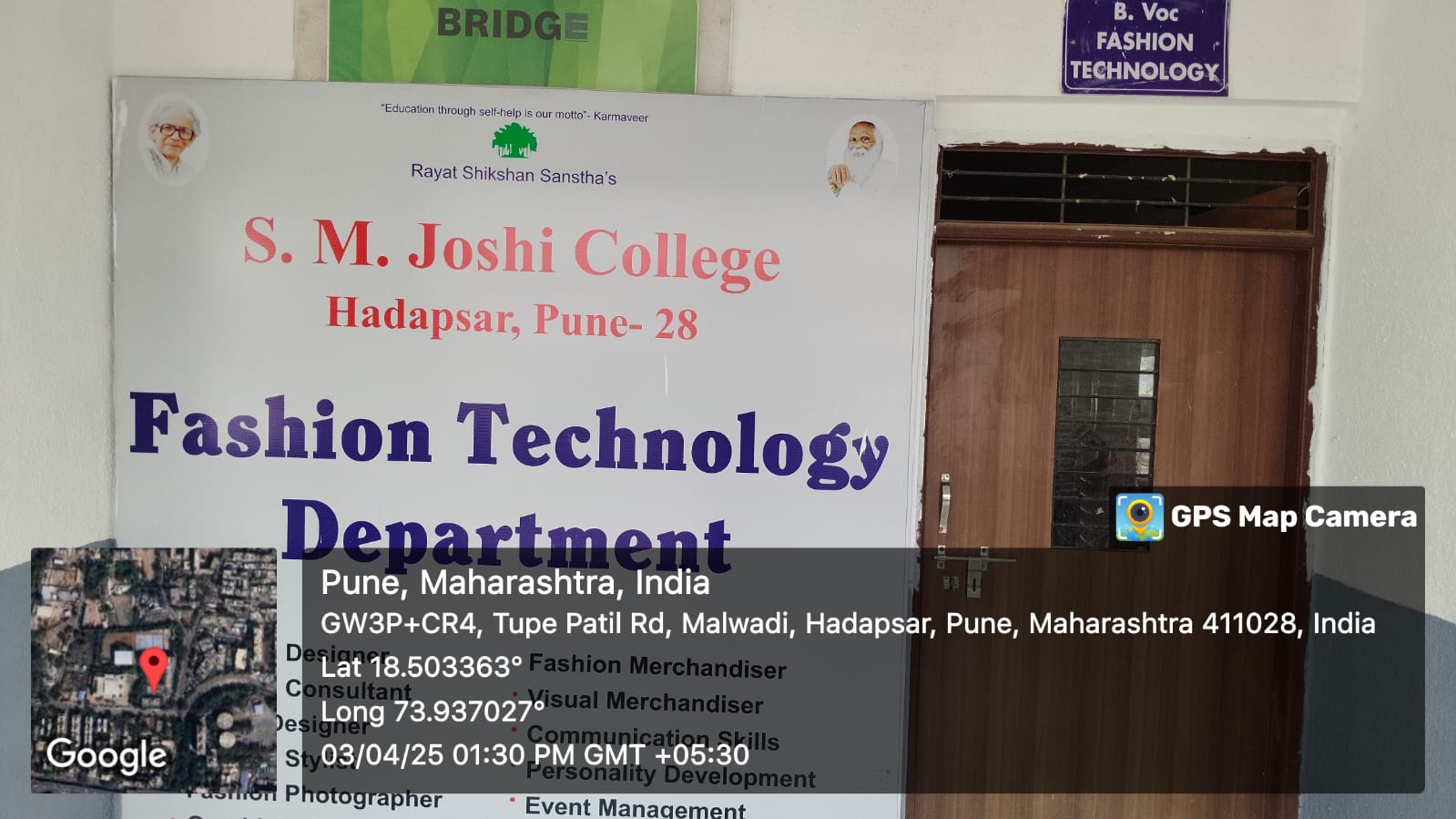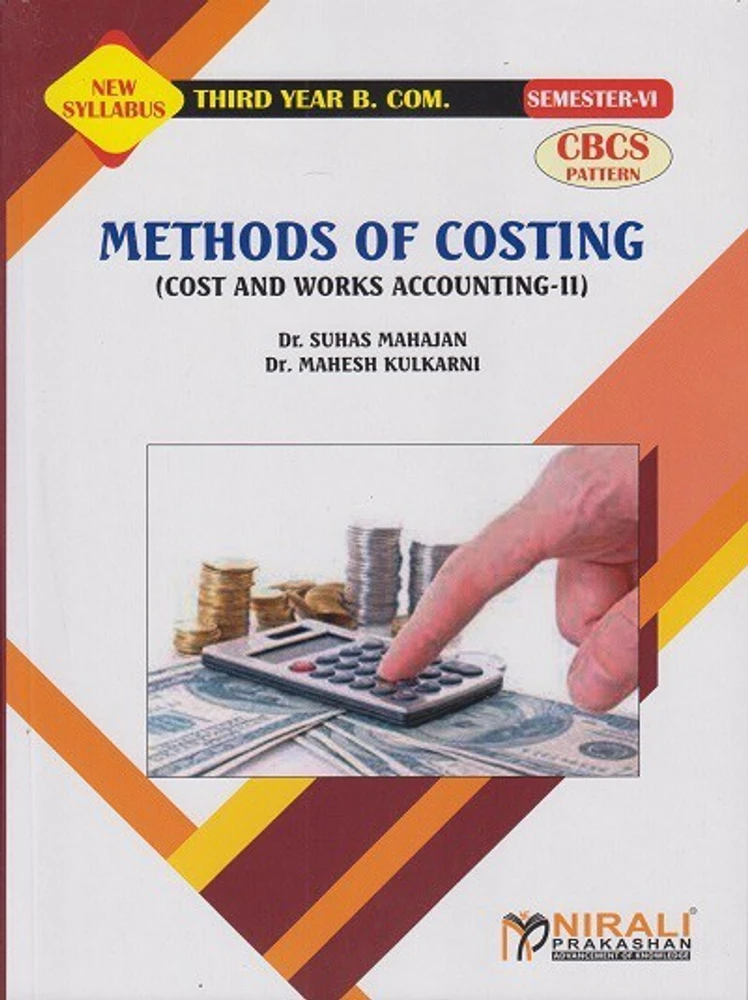Fashion Illustration I
Unit I • Introduction to drawing material dry material, wet material, type of paper 1 15 Unit II • Croquis Kids, male and female, • Fashion figure - 10½, and 12 heads, front, back, side and ¾ profiles 1 15 Unit III • Make stick figures in different poses. • Make geometric figure. 1 15 Unit IV • Fleshing on block figures. • Body line reading through different poses. 1 15 Unit V • Live human sketching • Stippling, Hatching, crosshatching &blending. 1 15 Unit VI • Face analysis. • Draw features eyes, nose, ear, lips, face, hands, arms, feet, legs and hairstyles. • Detail in study of light and shade of different types of folds, gathers and shape of fabric in dresses. 1 15
Read MoreB.Voc. in Fashion Technology (FT)
ashion Technology is an interdisciplinary course that combines creativity with technology to design, develop, and manufacture clothing and fashion products. It covers areas such as garment construction, textile science, fashion illustration, computer-aided design (CAD), pattern making, and apparel production. The course equips students with technical skills and industry knowledge to innovate in fashion design, sustainable practices, and modern manufacturing processes, preparing them for careers in the dynamic fashion and apparel industry.
Read MoreBV 105 Pattern Making & Garment Construction
B.Voc. in Fashion Technology (FT) Course Name Pattern Making & Garment Construction I Course Code BV 105 Class FY B.Voc Semester I No. of Credits 06 Contact Hours 90 Aim Pattern making technique This function connects design to production by producing paper templates for all components such as cloth, hemming, fusible etc. which have to be cut for completing a specific garment. • Objectives • Understand the relationship of shape and line to the human form. • Interpret design ideas into pattern form. • Experiment with shape in the generation of design ideas. • Analyze fabric characteristics in relation to pattern design Course Outcomes • Students will be able to construct tailored garments, in correct sequence of operations. Unit Topics Credit Lectures Unit I • Introduction to Drafting & Pattern Making. • Hand and machine seams. • Patterning of pleats tucks and gathers. • Patterns of plackets, pockets. 1 15 Unit II • Pattern of basic bodice of child • Pattern of basic baby frock 1 15 Unit III • Pattern of basic baby set with different types of collars ,sleeve etc 2 30 Unit IV • Pattern of Sleeves and types of sleeves. Also pattern of cuff and tab. • Pattern of collar and types of collars. • Fabric estimation and its importance. • Fitting: Good fitting, Fitting problems and their solution. 2 30
Read MoreIndian Economic Policy(OE)
The NEP 2020 aims to create a more holistic and flexible education system, encouraging critical thinking, problem-solving, and practical application of economic principles. It also emphasizes the development of skills relevant to the 21st-century economy.
Read MoreCommerce – Cost and works Accounting
Cost and Works Accounting is a branch of accounting that focuses on recording, analyzing, and controlling the costs associated with production and operations. It helps businesses determine the actual cost of products or services, manage resources efficiently, and make informed financial decisions. Unlike financial accounting, which provides a broad overview of a company’s financial performance, cost accounting goes deeper into the internal costs of each process, department, or product. It includes cost classification, cost control, cost reduction, and budgeting. This subject is especially useful in manufacturing and service industries where cost analysis and control play a vital role in profitability. By applying various methods and techniques, cost accountants help organizations minimize waste, improve productivity, and increase efficiency. In summary, Cost and Works Accounting equips students with essential tools to manage costs effectively and contribute to better financial planning and operational performance in an organization.
Read More


